Best foot forward
Sofia Echo Com, Christine Milner, 12.03.2005
SNOWSHOEING in the Rila Mountains sounded like just what the doctor ordered, after a bout of very nasty flu in January left me with the winter blues. The offer came from Odysseia In, the best known name in alternative tourism in Bulgaria, which was hosting one of its regular journalists’ trips, not only to acquaint them with what the Rila Mountains have to offer besides standard downhill skiing, but also to celebrate the company’s 15th anniversary. In those 15 years the company’s owner, Liubomir Popiordanov, has built up a large team of enthusiastic young people who are constantly on the move, taking groups of foreign tourists around pretty much the whole of Bulgaria with the exception of the Black Sea coast. These trips range from fairly leisurely tours of Bulgaria’s cultural heritage to the more extreme experiences of mountain biking through the Rhodopes for eight days, kayaking on the Danube or rock climbing in Rila. The company is the driving force behind the Bulgarian Association for Alternative Tourism, which has several strings to its bow, including training professional mountain guides, publishing the first annual guide to Bulgarian guest houses and establishing the “Bulgarian Home” charter, which guides individuals in their desire to set up their own traditional guest house. Of particular interest is Odysseia’s sister company Zig Zag Holidays, which offers similar products for the domestic market, including expats living in Bulgaria and individual tourists. We set off from Sofia after lunch on Friday and took the back route via Zheleznitsa to the town of Sapareva Banya, once known as “Germaneya” by the Romans, for whom this spa town was an important point on the main route connecting Rome, Greece and the Black Sea. That historical fact is difficult to believe now, given how run-down the town has become. Besides the Byzantine St. Nikola basilica, the only sight worth seeing is the geyser, which spews out the hottest water in continental Europe – an unbelievable 103C. At a meeting with the mayor, we were told that plans are afoot to revive Sapareva Banya, and by the end of this year the sanatorium should be up and running, offering spa treatments based around the amazing curative properties of the water. The town’s public baths already have had an overhaul, so if you fancy a communal wash, then check it out. Apparently there is a lot of investor interest, so the town appears poised to develop in the coming years. From the town you can walk up to the impressive Ovcharenski Vodopad (waterfall). It was a hair-raising ride up the icy road to Panichishte, a place of which I previously knew little. Our destination was the Gornata Zemya (“Upland”) hotel. Panichishte has no history of being a major resort, but had about 10 hotels or “rest homes” belonging to various branches of the socialist economy. Upland’s owners bought and renovated the hotel three years ago, as a refuge from a high-powered life in the capital city. The hotel is far from luxurious – small, comfortably furnished rooms with a small but new bathroom and one large common area downstairs, made cosy by the stone fireplace that radiates welcome heat. In fairness, of course, this is not a place to which one comes for the sake of luxurious decor. Opposite the hotel is the start of the path up to the Seven Rila Lakes, an astoundingly beautiful area of mountain-top shining expanses of water, about two and a half hours away. The large, modern Rila National Park Visitors Centre in Panichishte has a large variety of maps and leaflets depicting the different walks on offer in the mountains, including the “Friends of the Plants” trail, which shows you which rare plants you can see where and when. Strahil Gyuviiski, who runs the Centre, delights in telling guests about the fascinating legends about the dragons and fairies that live in the mountains. Close by is the Skakavitsa Reserve and the Skakavitsa Waterfall, which when frozen in the winter is used as an ascent by rock climbers! The hotel’s owner, Niki, is happy to accompany guests on bicycle rides and hiking trips, and by the summer expects to have his own horses for pony trekking in the mountain. Panichishte has a couple of small ski runs of its own, and by next winter there should be a new 2km chair lift all the way up to the Seven Lakes’ pistes, as well as a new piste running all the way back down to Panichishte. One of the hotel’s outstanding features is the cuisine – a lovely surprise for me, resigned as I am to putting up with that stodgy vegetarian staple Sirene po Shopski every time I leave Sofia. On the first evening while the rest of the group were served Katma (a savoury pancake) stuffed with pork and vegetables, our vegetarian option was the same Katma but with a tasty spinach stuffing. The meat eaters that tried it were green with envy. The following evening we got a veggie cutlet instead of the meat eaters’ roast pork. The salads were also more imaginative than the standard Shopska, though naturally that too is available on the menu. We were treated to an excellent young Merlot wine. The warm welcome of the owners and their sensitivity to what tourists are looking for is the hotel’s biggest selling point. At 15 leva a bed, it’s also good value. The next morning we awoke to overcast skies and a light snowfall, but I was too excited about the challenge of the day to be bothered by the weather, as we geared up with our ski suits, gaiters, rucksacks and the all important snowshoes. Setting out at 9.30, the walk up to the Seven Rila Lakes hut was, to say the least, challenging. I think it took us almost four hours to walk there, large parts of it steeply uphill through virgin snow, which we measured as two metres deep! The snowshoes keep you from sinking. The proper method is to dig the teeth in at the front to keep your grip. Unfortunately, the snow increased, and as we were at cloud level, we had no view at all. This didn’t matter that much in the forest, but when we came out into the clearing at the top where the ski pistes are, I couldn’t even see where the snow ended and the sky began. Once inside the hut, we could rest our feet, weary from the unusual sensation of walking around like a duck, and have a soup for lunch. I spent most of my break drying out my clothes. Once we were through, it was back to base via a shorter and more direct route, which was of course downhill. We had a lot of fun running through the untouched snow and sliding down some of the tracks on our bottoms. We got back to the hotel at about 5.30 pm, glad of the freely flowing hot shower. One of our group was so exhausted she went straight to bed and didn’t get up till the next day. The rest of us enjoyed a well-earned meal and some of that very mellow Merlot. I relished the experience of a refreshing weekend, including some fairly demanding physical exercise, getting to know a new part of Bulgaria and a new base where we can take friends for a weekend away in the mountains, safe in the knowledge we won’t be sat there twiddling our thumbs and wondering what to do with ourselves or our children. see source
 Member of:
Member of:
















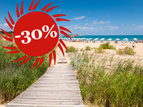

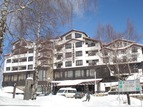
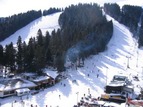
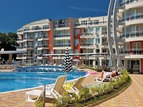
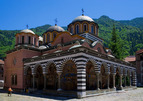
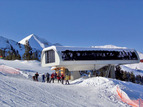




 Touroperator
Touroperator
